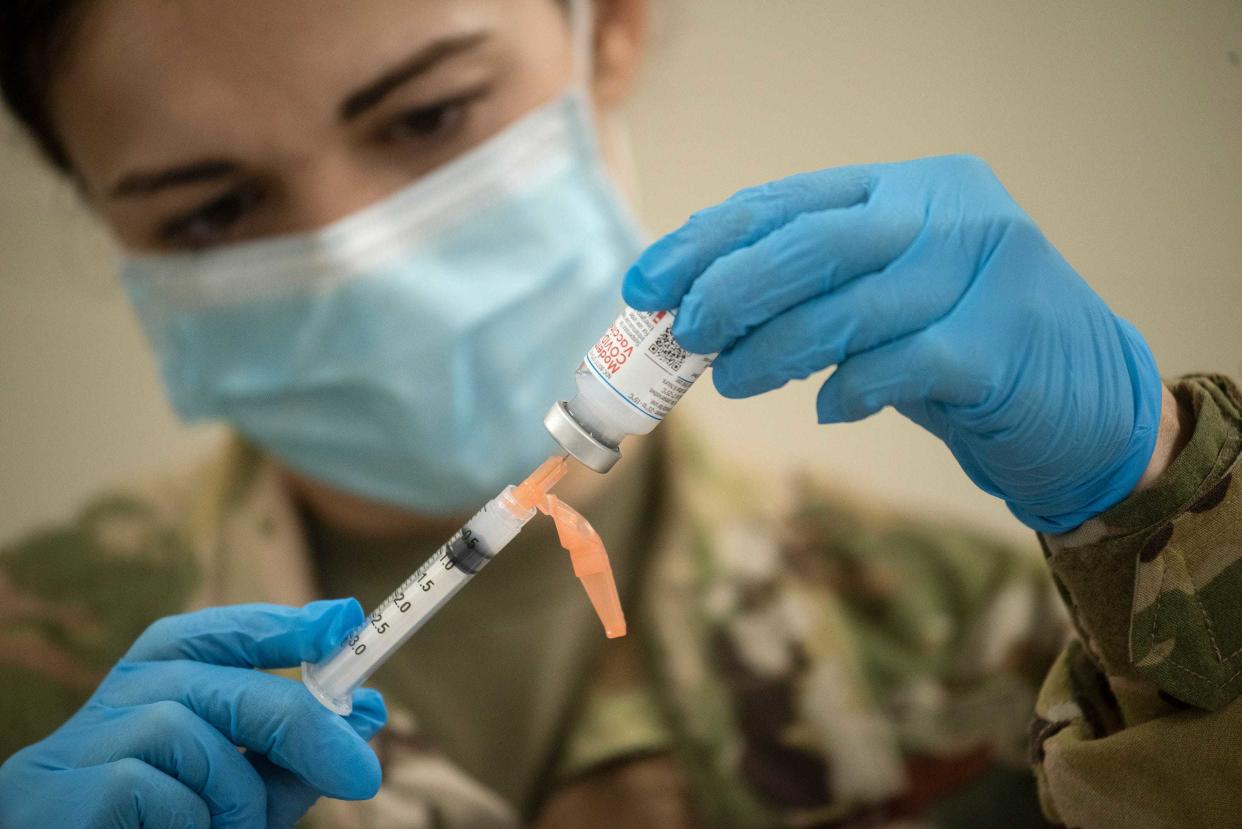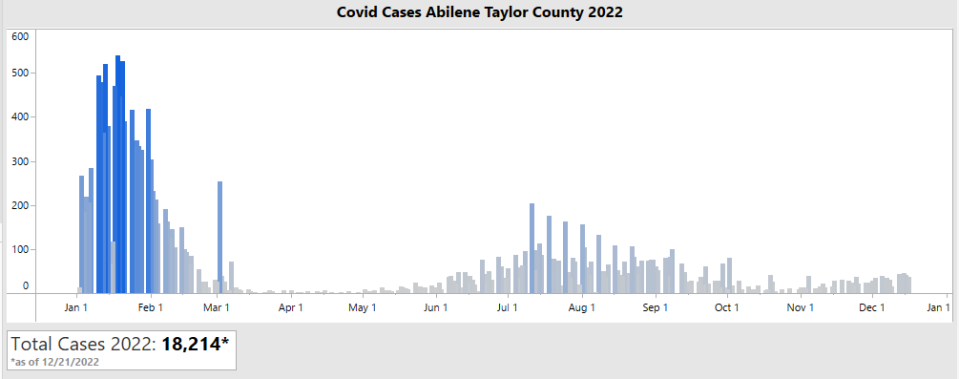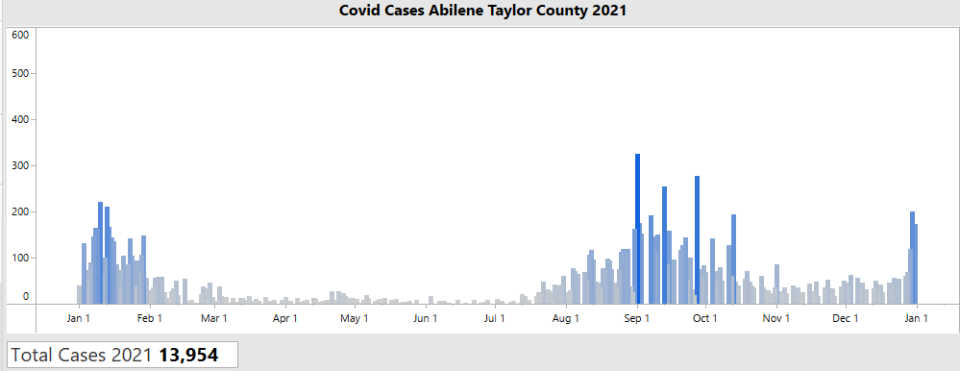2022 COVID-19 infections outstrip those in previous year

COVID-19 infections this year have outstripped those in 2021 with a few days still yet to go, according to data shared by the Abilene-Taylor County Public Health District.
The total number of cases in 2021 hit 13,954, with major spikes seen in January and large points in September and October, rising again at the end of the year.
As of Dec. 21, there had been 18,214 COVID-19 cases this year, the health district reported.

New cases of the illness have been on the rise in recent weeks, with 83 reported Thursday.
"We have been trending up for the past couple of weeks and going from an average of 30 cases per day to about 40 cases a day," said health district data analyst Chris Timmons.
Taking a wider look, cases this year spiked to far greater levels than at any point in the previous one in January and February, followed by a spike in March and smaller ones over the summer
"That big spike at the beginning of 2022 was omicron," Timmons said. "In that wave, we had about twice the cases as the Delta wave in about half the amount of time."
There were 714 active cases as of Thursday, according to the local COVID-19 dashboard.
As of that date, Taylor County had reported 42,511 total cases of COVID-19 throughout the pandemic, with 41,168 recoveries and 661 deaths.
New variants on radar

According to the Texas Department of State Health Services, earlier variants of the virus are no longer as much of a factor in new cases of illness, but emerging ones are.
The BA.5 variant of the Omicron strain remained dominant up to a few weeks ago, said Annette Lerma, director of the Abilene-Taylor County health district.
But new strains such as BQ1 and BQ1.1, have already taken over as most prevalent in the state, according to health department data, accounting as of Dec. 10 for 66% of cases throughout Texas.
Both strains are subvariants of BA.5.
"This is likely driving the current increase, as it is thought to be a little more evasive to whatever immunities we've built up or inoculated against," Lerma said.
Uncertain patterns
Timmons said it's difficult to predict exactly what the new variants are going to do numbers-wise in the coming year.
While COVID-19 has been an ongoing factor since 2020, it's still difficult to ascertain patterns because it hasn't been in the public eye, or studied, long.
"We have been trending upwards in new cases for a few weeks now," he said, confirming the recent rise in local numbers.
"However, I haven't seen or read anything that suggests we are going to see another omicron surge like last winter," he said.

Shots still needed
Even with new variants in the mix, "it is still believed that the current boosters provide significant protection from severe disease and death," Lerma said.
"Those dying now typically do not have their booster shots," she said.
Even if patients have had a full round of the initial vaccine series, "that is thought to no longer be adequate to protect against severe disease and death for the immune-compromised and elderly," Lerma said.
"So, the boosters are critical," she said.
This article originally appeared on Abilene Reporter-News: 2022 COVID-19 infections outstrip those in previous year

